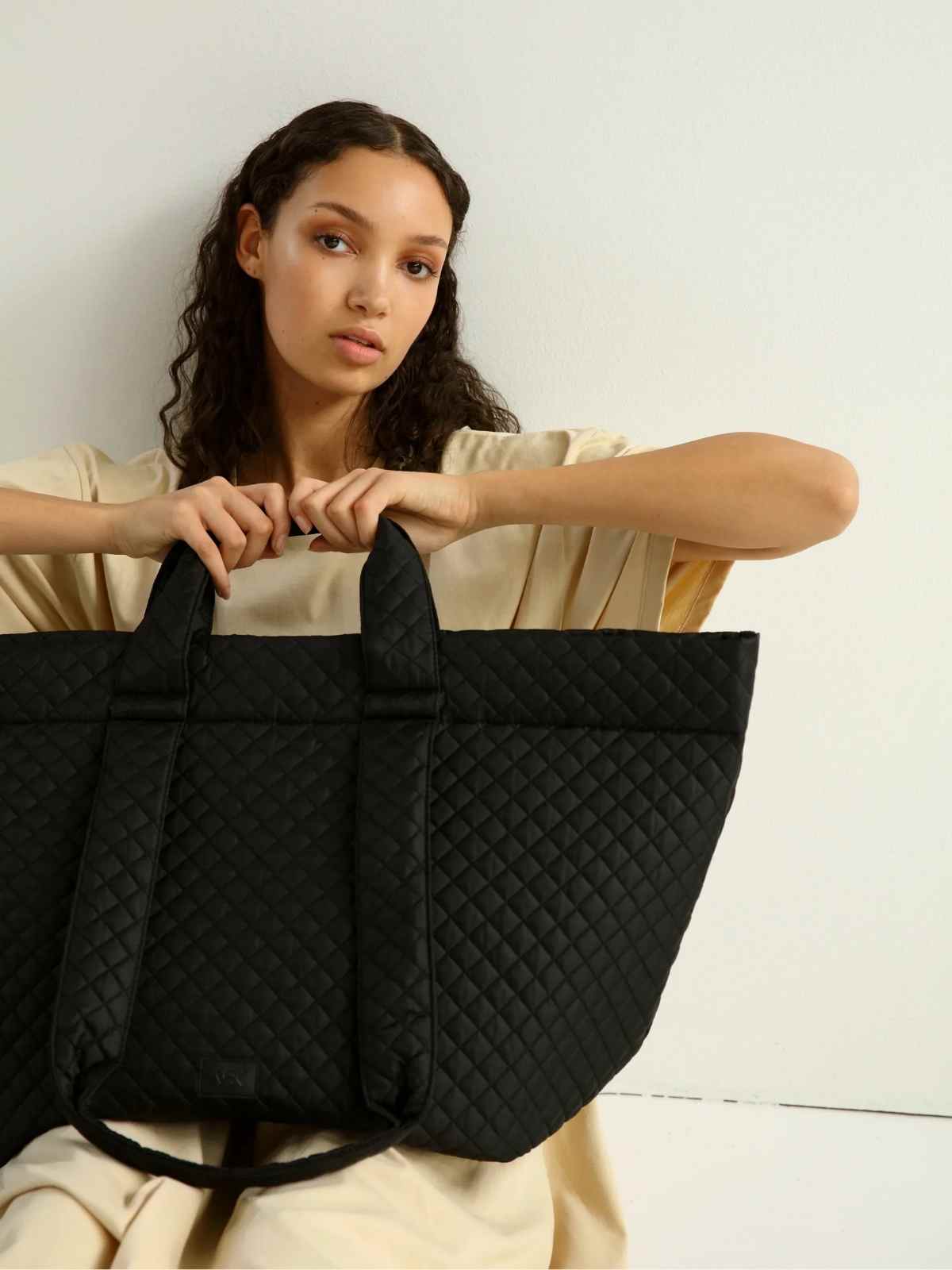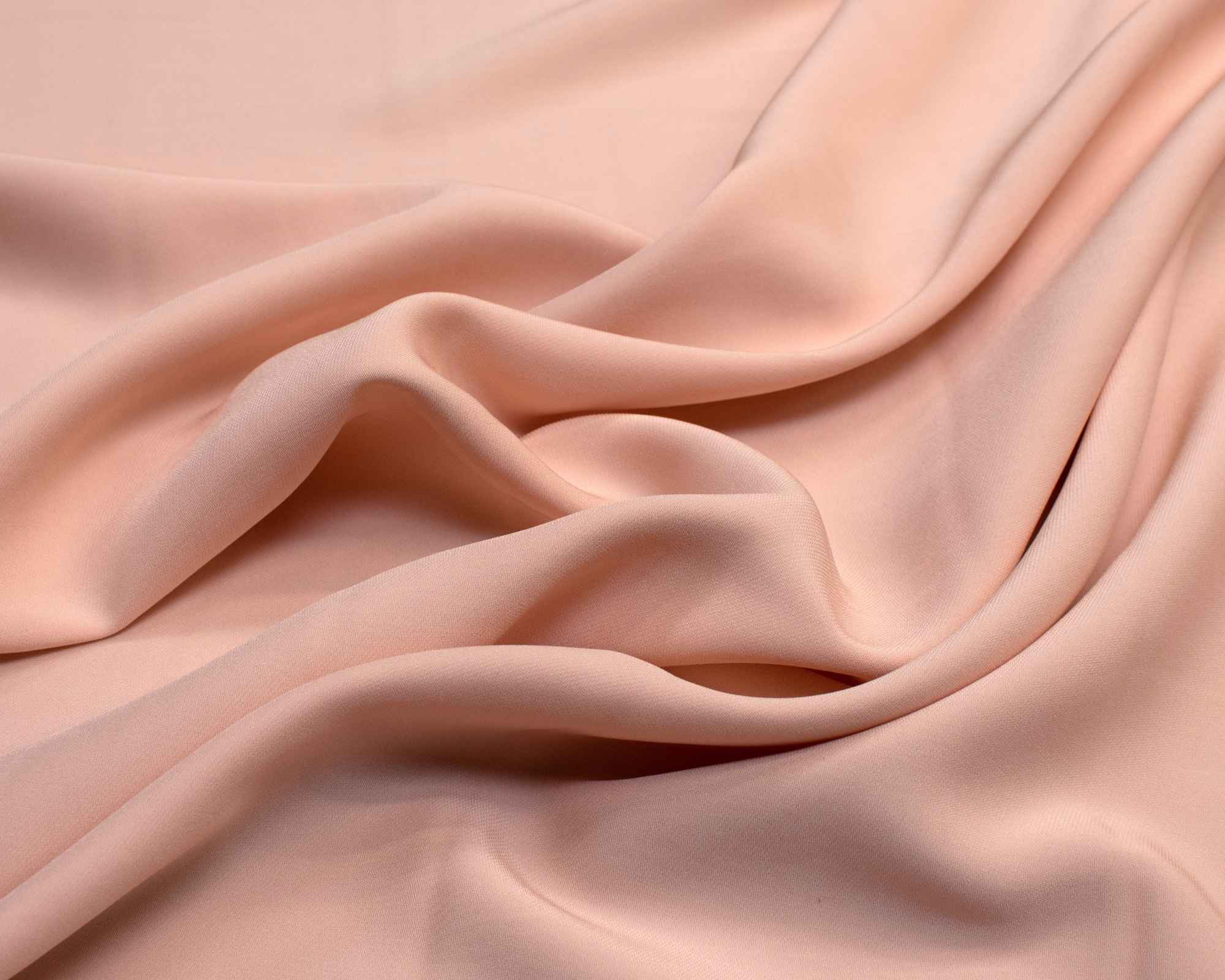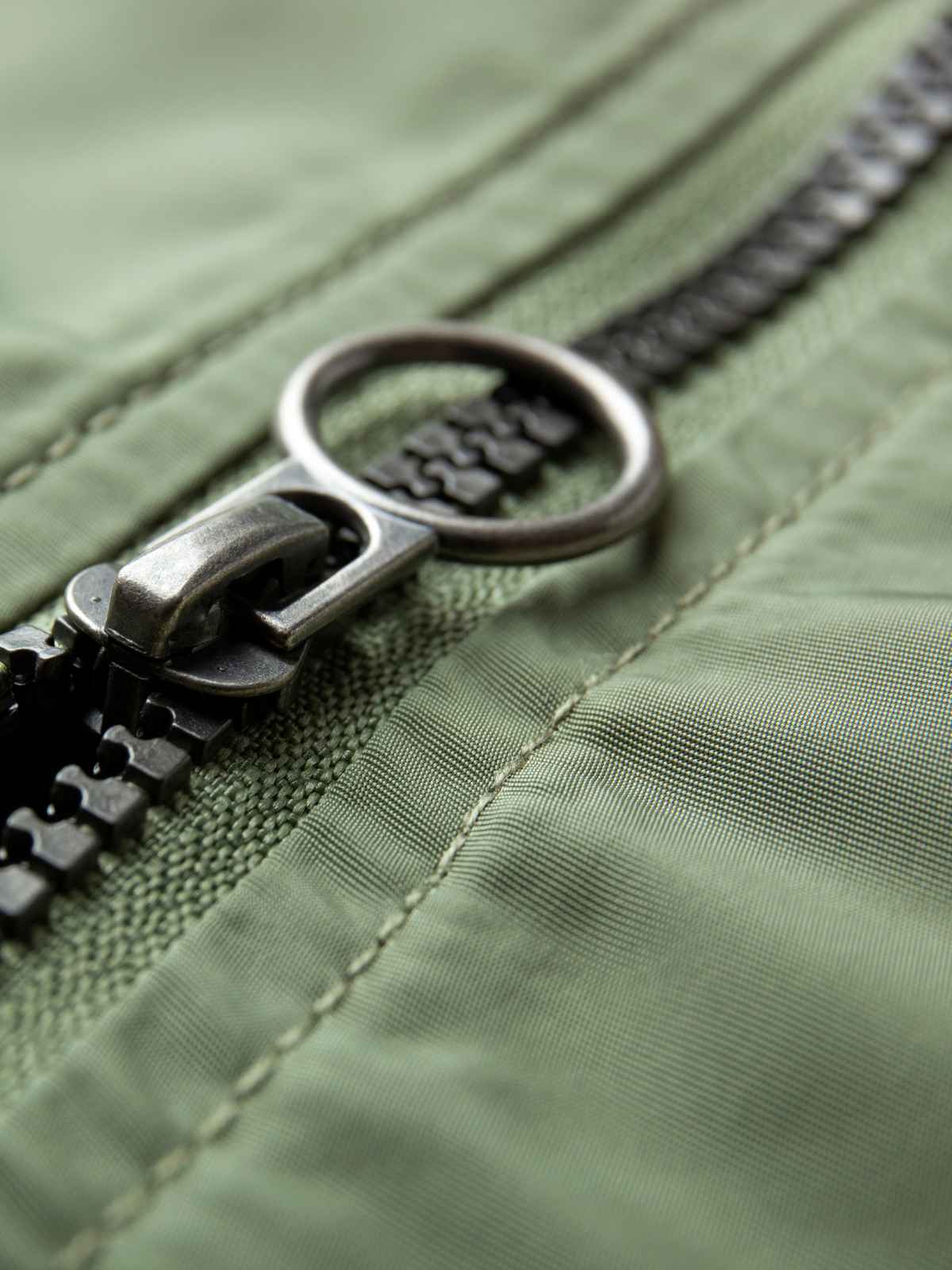Man-made cellulosic fibres such as viscose, Lyocell, cupro, and modal are made from trees, but that doesn’t necessarily make them sustainable. In fact, their manufacturing can contribute to deforestation and chemical release if not managed properly. Here, we explore how man-made cellulosics are made and what their impact is.
What does man-made cellulosic fibre mean?
Man-made cellulosic fibres are a diverse group of materials made from the raw material cellulose. They’re often abbreviated to MMCFs and sometimes dubbed “semi-synthetics”. The cellulosic base material used to make these fibres usually comes in the form of dissolving wood pulp (DWP) derived from trees, but can also be made with other materials such as agricultural and textile waste.
The most common MMCFs are viscose (rayon)—which has roughly 80% of the MMCF market share—Lyocell, cupro, bamboo, and modal. The main differences between these materials are the plants or trees (sometimes called feedstocks in the industry) used to produce them, and their properties. Modal, for instance, is mainly made from beech wood and used in stretchy jersey form for t-shirts and casualwear. Lyocell is commonly made from eucalyptus feedstocks and is used in a variety of products including underwear and soft denim. It’s manufactured by several companies under various names, with the best known being Lenzing AG’s TENCEL Lyocell. Some Lyocell fibres are made from other feedstocks such as bamboo, or even a combination of eucalyptus and seaweed powder—as seen in Smartfiber AG’s Seacell.
How are they made?
Manufacturing MMCFs varies between each material, but the general process is the same, and it involves turning trees or other cellulosic feedstocks into textiles.
Here’s an overview of how it happens: First, the cellulosic raw material is prepared. Most often this involves trees being processed into wood chippings, which are then dissolved using heat and chemicals. The resulting substance is bleached, formed into a sheet, dried, and packaged in bales or rolls depending on its intended use. For textiles, the cellulose undergoes even more chemical processing to achieve a substance that can be spun into fibre filaments, which can later be made into yarn or thread.
But since these steps often happen at different locations, mapping the entire supply chain of MMCFs and ensuring they’re sustainable can be really complex.
The link between man-made cellulosic fibres and deforestation
Since MMCFs are most commonly derived from plants, it’s easy to assume that natural equals renewable and therefore more sustainable. But demand for MMCFs has reached such a high that vast swathes of trees are being cut down to meet it. Estimates vary depending on the date they were made, but environmental NGO Canopy puts the number of trees cut down annually at 300 million.
Forests are being transformed into plantations for cellulose production on a huge scale, and that’s leading to the creation of monocultures, significant biodiversity loss, a reduction in carbon sinks, the destruction of Indigenous communities’ land, and the degradation of important ancient and endangered forests.
Greenpeace reports that two of the world’s largest pulp companies are linked to deforestation and the destruction of tropical forests that are home to endangered species. And if they’re not managed properly, the hazardous chemicals used in a lot of MMCF manufacturing can contaminate local ecosystems and threaten species.
Many consumers aren’t aware that forest fibres are used in fashion, so they’re not armed with the information and certifications to look out for when shopping. The Forest Stewardship Council (FSC) and Programme for Endorsement of Forest Certification (PEFC) both certify forest-derived products that are made with materials that support responsible forestry, while Canopy’s Hot Button Report ranks the world’s biggest viscose producers on their progress in eliminating wood from ancient forests from their supply chain. Good On You takes this reporting into account when we’re rating brands. Canopy also partners with fashion brands that commit to developing next-generation MMCF alternatives and strongly advocating for forest conservation. And the organisation’s founder, Nicole Rycroft, recently offered some positive news to The Guardian: “In the last seven years, more than half of global viscose producers have shifted away from high-risk forest-sourcing towards FSC-certified forest fibre and low-carbon next-gen alternatives.”
Another issue that consumers aren’t always aware of is the use of chemicals in the MMCF supply chain and the impact they have on workers and the environment.
Chemicals in man-made cellulosic fibre manufacturing
MMCFs may be plant-derived but significant chemicals and processing are required to transform wood into fabric—though it’s worth noting that the level of chemicals involved depends on the exact material. Some of the toxic chemicals used in MMCF production (and that can be released into the environment) include caustic soda, sulphuric acid, and carbon disulphide in viscose and modal manufacturing. Carbon disulphide has been linked to health problems in both textile workers and those who live near viscose factories—that’s why it’s so important for manufacturers to invest in chemical management and recovery.
To that end, the ZDHC has published a range of guidelines to address the use and discharge of hazardous chemicals in wastewater, sludge, waste, and air emissions in MMCF manufacturing. The guidelines don’t yet cover the dissolving pulp process, but they offer a roadmap to improving a problem that must be addressed as we move towards a more sustainable fashion industry.
Are man-made cellulosic fibres sustainable?
MMCFs have the potential to be a more sustainable material, but this is strongly dependent on eliminating deforestation and reducing harmful chemicals from the supply chain—or at the very least managing them safely. And technically, MMCFs are biodegradable, but the application of dyes, finishes, and treatments could affect the fibre’s biodegradability, not to mention that they could leach chemicals into the environment as they break down, so it’s important to check for certifications of biodegradability before disposing of products or materials.
The sector is also heavily reliant on virgin raw materials in the form of trees, but using feedstocks derived from waste materials such as recycled textiles could help to lessen its impact. At the moment though, uptake on MMCFs derived from recycled feedstocks is low—they represented just 0.5% of global fibre market share in 2021, according to Textile Exchange.
Is Lyocell a lower-impact option?
The process for most MMCFs is typically very chemical-intensive and often results in their release into the environment, and in them causing harm to those through the supply chain. But the manufacture of Lyocell fibres uses the NMMO solvent process instead—it means that the chemical N-Methylmorpholine N-Oxide is more easily recoverable than other types, and, combined with a closed-loop system, results in almost no solvent being dumped into the environment as it continues to be reused. One of the most prominent Lyocell manufacturers, Lenzing AG, says the solvent recovery rate for its TENCEL Lyocell is 99%, and it also recycles the process water. So while this is certainly an improvement on other MMCF chemical processes, it’s important to keep in mind that the process is still energy-intensive and could still contribute to deforestation—though TENCEL Lyocell is made using wood from certified sources.
TENCEL has also developed Lyocell with REFIBRA, which uses a feedstock made partly from dissolving wood pulp from trees, and partly cellulose from textile waste. The company explains: “The fibres contain a minimum of 30% recycled material, which is sourced from pre- and post-consumer waste. These cotton scraps could have otherwise entered landfills or been incinerated.”
Above all, it’s important to remember that materials and fibres in fashion are a complex issue, and every single material on the market today has some sort of trade-off and impact on the planet, so a mixture of preferred—or lower-impact—materials is needed going forward. If you’re interested in learning more about lower-impact materials, our ultimate clothing material guide is essential reading, and we’ve also got explainers on specific MMCFs, including viscose, modal, Lyocell, cupro, and bamboo.




















